LONDRA. Fino al prossimo 22 febbraio alla galleria Ibid c’è Punks, la mostra di Karen Knorr e Olivier Richon che coi loro scatti hanno documentato la scena Punk di Londra nei suoi anni d’oro, dal 1976 al 1977.
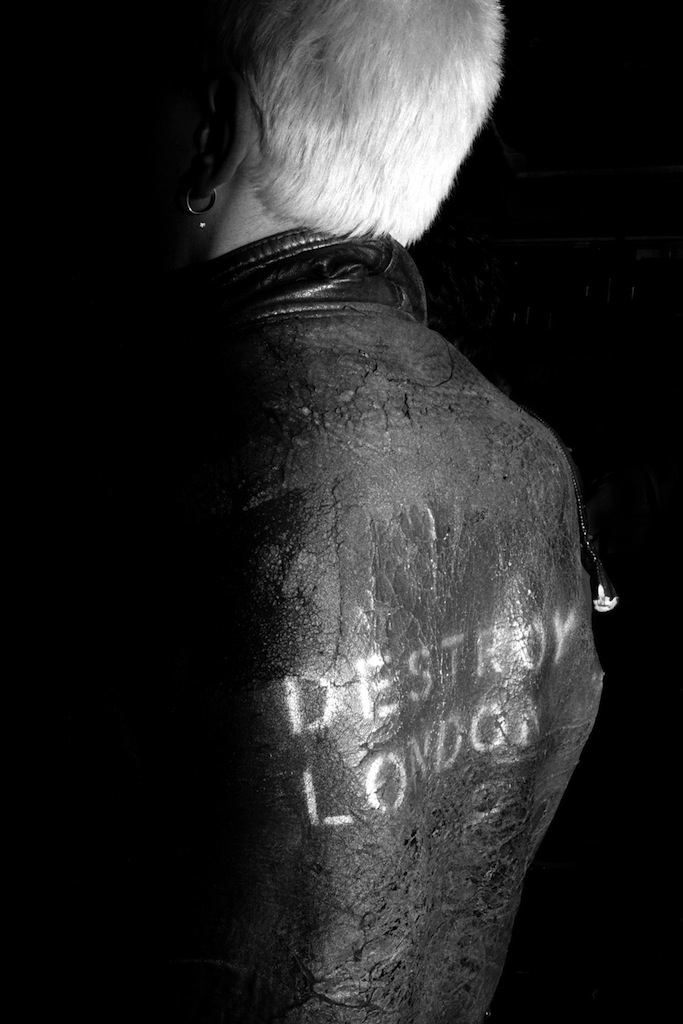
Destroy, 1977
vintage print on silver bromide paper
image 13.1 x 19.6 cm, paper 20.2 x 25.5 cm
(IBID-RICHO-00158)
Le fotografie sono state scattate in diversi club tra cui il Roxy, il Covent Garden, il Global Village e il Charing Cross nel 1977. La mostra, poi, vuole anche celebrare la potenza della figura femminile come Ari Up, Laura Logic, Palmolive, Poly Styrene and Siouxsie Sioux che erano tra le musiciste che hanno fatto più sentire la loro presenza in un’industria musicale dominata finora dall’universo maschile. I punk nelle fotografie hanno posato per gli scatti e in un periodo di tre mesi gli artisti hanno visitato club, incontrato le stesse persone che nel frattempo, in un piccolo periodo di tempo, avevano cambiato look molte volte sfregiando i loro vestiti, unendoli con spille ed altro.
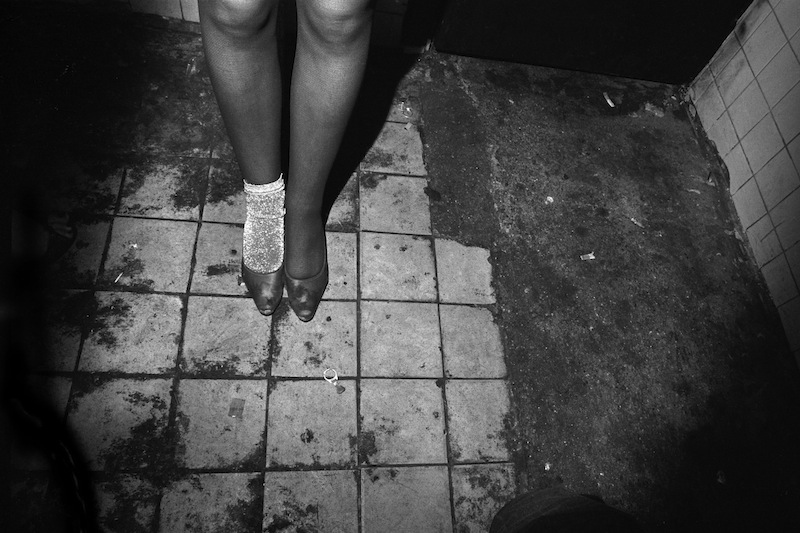
Roxy Club 6, 1977
vintage print on silver bromide paper
image 20.2 x 13.2 cm, paper 25.7 x 20.4 cm
(IBID-RICHO-00167)
“Lavorare insieme – spiegano Karen Knorr e Olivier Richon – ci ha permesso di controllare l’illuminazione e di stabilire un rapporto più facile con i nostri soggetti. Il nostro punto di partenza è stato quello di allontanarci dalla strategia del ‘candid photography’ evitando così l’immagine ruvida e granulosa associata a quel modo di lavorare. Abbiamo, invece, scelto un confronto diretto con il nostro soggetto, affermando la nostra presenza invece di eluderla. In questo senso, queste immagini sono ritratti tanto quanto documenti. Il club è diventato uno studio, uno spazio senza finestre, con lo sfondo scuro e illuminato solo dalla luce artificiale. La torcia ha rivelato gesti e dettagli che altrimenti sarebbero stati invisibili”.
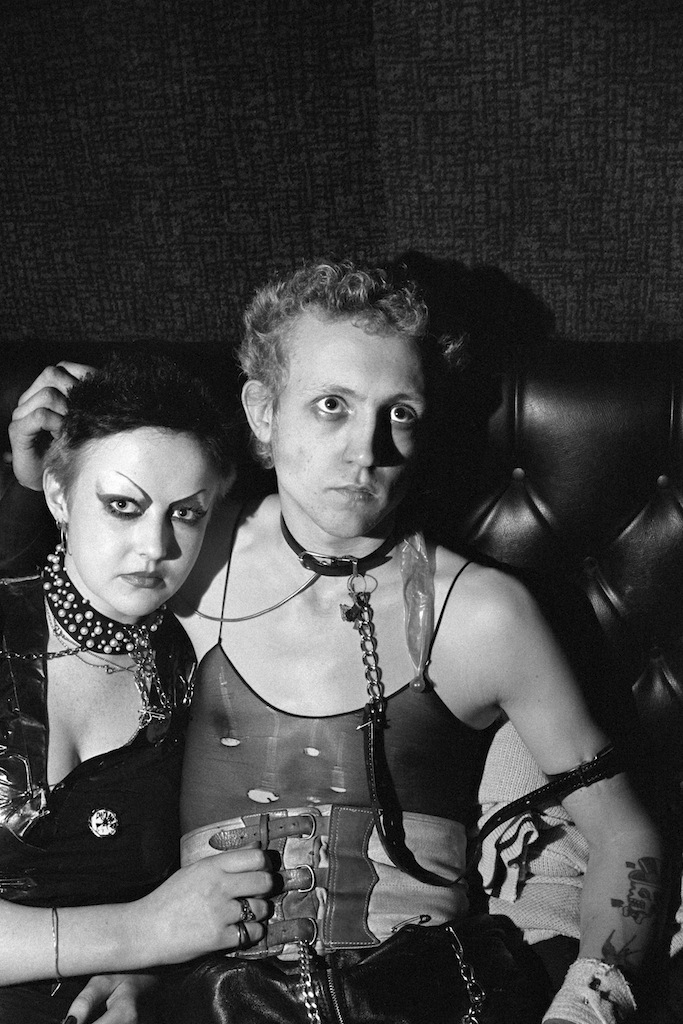
Roxy 4, 1977
vintage print on silver bromide paper
image 13 x 19.4 cm, paper 20.4 x 25.5cm
(IBID-RICHO-00161)
La scorsa estate, inoltre, gli artisti hanno rivisto l’archivio degli inediti della loro serie e hanno collaborato per una pubblicazione con i libri GOST . Punks, poi, è stata esposta al La Photographers’Gallery nel 1978 e alla Tate Britain nel 2012 . Alcune delle fotografie sono state acquisite dal Council of Great Britain nel 1970 e apparse su Sounds (1977); The Village Cry (1977); Camerawork 12 (1979) e About 70 Photographs (1980). La mostra sarà accompagnata dal libro di recente pubblicazione, Punk, edito da GOST Books. La copertina rigida è disponibile in un’edizione limitata di 1.000 copie con saggi di Karen Knorr e Olivier Richon mentre ci saranno 20 copie con una copertina d’argento firmata dagli artisti.
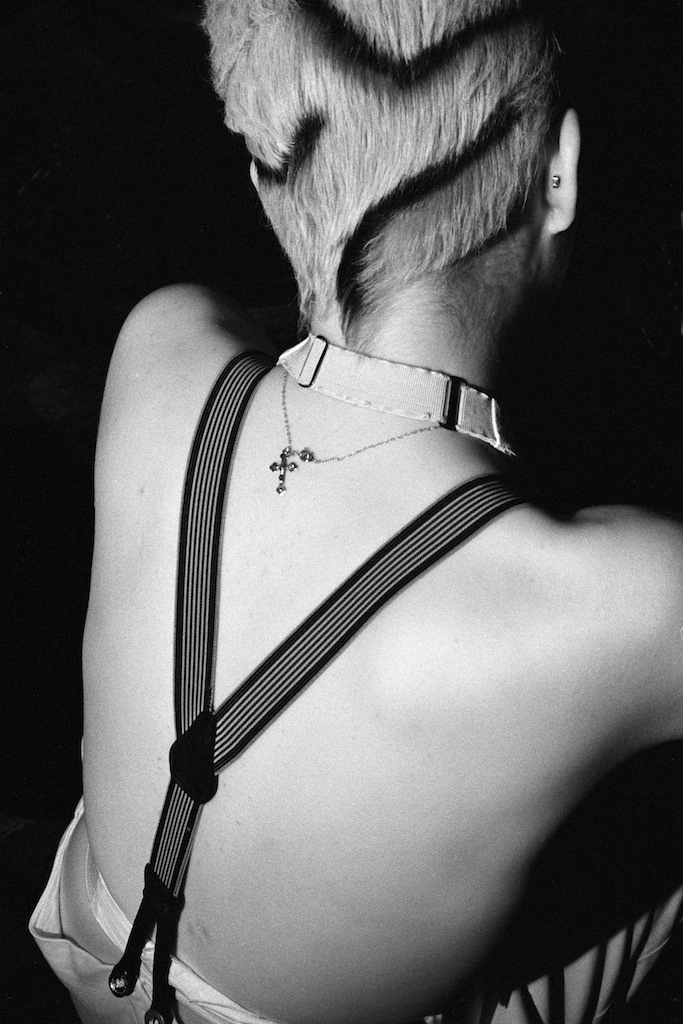
Roxy 2, 1977
vintage print on silver bromide paper
image 15.4 x 22.8 cm, paper 20 x 25.5 cm
(IBID-RICHO-00162)
Karen Knorr è nata in Germania nel 1954 ed è cresciuta a San Juan, Puerto Rico. Arrivata a Londra nel 1976 e laureata al Politecnico di Londra con un BA ( Hons) in Cinema e Arti fotografiche nel 1980, ha continuato gli studi con un Master alla Derby University. A Karen Knorr è stato assegnato un fondo col Premio Arts nel 1986 per la sua serie ‘Gentlemen’; e nel 2010, con ‘India Song’ha ricevuto il Pilar Citoler V Premio Internazionale di Fotografia. La sua fotografia sviluppa un dialogo critico e giocoso con la fotografia documentaria e utilizza diverse strategie visive e testuali per esplorare il suo oggetto. I sui lavori sono rappresentati da Eric Franck Fine Art (Londra), Photo & Co. (Torino), Galerie Filles du Calvaire (Francia), James Danziger (New York) e Tasveer Arte (Bangalore). Karen è anche docente di fotografia presso l’Università per le arti creative a Farnham, Surrey.
Olivier Richon è nato a Losanna nel 1956. Ha studiato presso il Polytechnic of Central London, dove si è laureato in Cinema e Arti Fotografiche, e ha un Master in Filosofia. Nel 1991 ha ricevuto il Premio Camera Austria per la Fotografia Contemporanea. Le sue fotografie propongono una rilettura del genere natura morta e una riflessione sull’oggetto come segno. La fotocamera, per Richon, comunemente è una metafora per l’occhio anche se spesso propone una metafora per la bocca, un occhio divorante che assorbe il suo soggetto per trasformarlo in un’immagine. ‘Real Allegories’, una monografia del suo lavoro fotografico è stata pubblicato da Steidl nel 2006. Attualmente Olivier è docente di fotografia al Royal College of Art.
Per info: ibidprojects.com
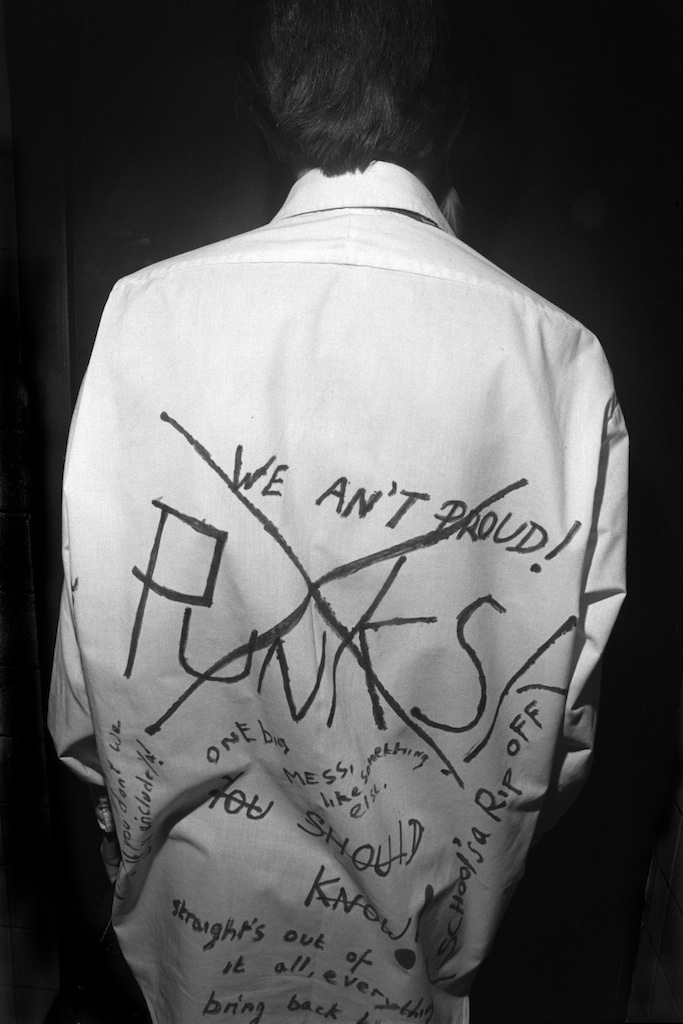
Roxy 3, 1977
vintage print on silver bromide paper
image 13.2 x 19.8 cm, paper 20.2 x 25.6 cm
(IBID-RICHO-00160
English version.
Ibid. is pleased to present a new exhibition by photographers Karen Knorr and Olivier Richon entitled PUNKS. Photographed between 1976-1977, the works document the London Punk scene at the time.
The photographs were taken in several clubs: the Roxy, Covent Garden and the Global Village, Charing Cross in 1977. Girls figured prominently in Punk; Ari Up, Laura Logic, Palmolive, Poly Styrene and Siouxsie Sioux were among many female musicians asserting their presence at gigs at the Roxy in a music industry dominated until then by ‘cockpower’. The photographs celebrate girl power of the 1970s. The punks in the photographs posed and performed for the camera; over the 3 month period the artists visited the clubs, they often met the same people who had changed their look radically over a short period of time using a DIY aesthetic of clothes slashed and pinned together.
“Working together enabled us to control the lighting – flash, often off camera – as well as being able to establish an easier relation with our subjects. Our starting point was to get away from the candid photography strategy of the invisible but truthful hit and run photographer, as well as avoiding the rough grainy picture associated with that mode of working. We chose a direct confrontation with our subject. This is why our pictures are posed, affirming our presence instead of eluding it. We attempted to achieve such a formal approach in order to emphasize punk symbolism and to make it more readable. It was important for us to ask people to pose, so that they were aware of the camera without posing too excessively for the camera. In this sense, these pictures are portraits as much as documents. The architecture of the club can be compared to that of a darkroom where images are in the process of appearing. The club becomes a studio, a windowless space only lit by artificial light against a dark background. As the subjects are posing in near darkness, it places the camera and the photographer in the position of an almost blind person. The flashlight would reveal gestures and details that were invisible at the time of taking the pictures. Posing makes the portrait more picture-like, it involves duration rather than capturing an instant. And yet, the flashlight arrests time and turns the pose into a snapshot.”
This summer the artists revisited the previously unpublished archive of their PUNKS series and collaborated on a publication with GOST books. PUNKS was exhibited at The Photographers’ Gallery in 1978 and included in Another London at Tate Britain in 2012. Some of the photographs were acquired by the Arts Council of Great Britain collection in the 1970s and appeared in Sounds (1977); The Village Cry (1977); Camerawork 12 (1979) and About 70 Photographs (1980).
Karen Knorr was born in Frankfurt am Main, Germany in 1954 and was raised in San Juan, Puerto Rico in the 1960s. Knorr arrived in London in 1976, graduating from the Polytechnic of Central London with a BA (Hons) in Film and Photographic Arts in 1980. She went on to do a Masters in Photographic Studies at Derby University in 1990. Karen Knorr was awarded a National Endowment of the Arts Award in 1986 for her series Gentlemen; recent work India Song was awarded the Pilar Citoler V International Photography Award in 2010. Her photography developed a critical and playful dialogue with documentary photography using different visual and textual strategies to explore her chosen subject matter that ranges from the family and lifestyle to the animal and its representation in the museum context. Her work is represented by Eric Franck Fine Art, London; Photo & Co., Turin; Galerie Filles du Calvaire, France; James Danziger, New York and Tasveer Arts, Bangalore. She is Professor of Photography at the University for the Creative Arts, Farnham, Surrey.
Olivier Richon was born in Lausanne in 1956. He studied at the Polytechnic of Central London, where he graduated with a BA (Hons) in Film and Photographic Arts in 1980 and a Masters of Philosophy in 1988. In 1991, he received the Camera Austria Award for Contemporary Photography. His photographs propose a re- interpretation of the still life genre and a reflection on the object as sign. The camera is commonly a metaphor for the eye. Richon proposes that it is also a metaphor for the mouth: a devouring eye that absorbs its subject to turn it into an image. Real Allegories, a monograph of his photographic work, was published by Steidl in 2006. He is currently Professor of Photography at the Royal College of Art.
The exhibition will be accompanied by the newly published book, PUNKS, published by GOST Books. The hardback comes in a limited edition of 1,000 copies with essays by Karen Knorr and Olivier Richon and will be available from the gallery. Additionally there will be 20 copies with a silver cover signed by the artists that will include a silver bromide print.

